Introduction
An infant industry is a newly emerging industry that requires close attention and support from the state. As part of the car building, countries are increasing their technical equipment and developing their economies. In addition, states minimize the impact of cars on the environment by reducing exhaust gases and switching to electric energy sources. This paper will look at the infant industry and support using Japan and India as examples.
Japan
The Japanese government is succeeding in reducing pollution and CO2 emissions from the automotive industry through continued support for a fledgling industry. The government has provided financial and other forms of support to help new and small businesses in the car industry get established and grow (Fan et al., 2020). This has helped to create a more competitive and innovative car industry in Japan that is better able to meet the needs of consumers and produce cleaner and more efficient vehicles.
Tcar industry is a major contributor to the Japanese economy, and the government aims to strengthen it. Secondly, the government is keen to encourage companies to develop new technologies that will reduce environmental impact. Japan is under pressure to meet ambitious targets for reducing emissions, and it sees the car industry as a key part of its strategy for achieving this (Fan et al., 2020). The car industry has benefited from a number of subsidies and support measures from the government. These have included financial incentives for research and development, tax breaks for investing in new technologies, and support for the establishment of new manufacturing facilities.
Subsidies have been used to help the car industry reduce pollution and CO2 emissions in different ways. One way to support is to provide subsidies for research and development of vehicles that are less harmful to the environment and more economical (Genther, 2020). It has supply financial aid for the production of hybrid and electric vehicles, which produce less dangerous gases and are more efficient than traditional petrol-powered cars.
To maintain the ecology, the Japanese state undertakes multiple strategies. The government offered to provide subsidies to support the buying of Clean Energy Vehicles (Fan et al., 2020). Thus, sales of environmentally friendly cars increased, which accounted for 36.2% of vehicle purchases (Japan transition, 2021). For comparison, in 2019 this indicator was equal to 35.2%, while in 2017 it was 32.9% (Japan transition, 2021). Thus, Japanese car companies have sold most of their environment-friendly vehicles following the provided subsidies. From the graphs below, the number of EV sales were increasing in 2021, meaning less pollution to the environment.
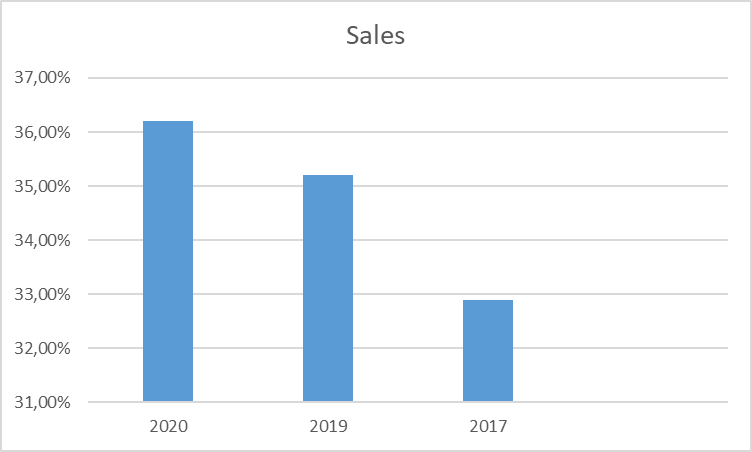
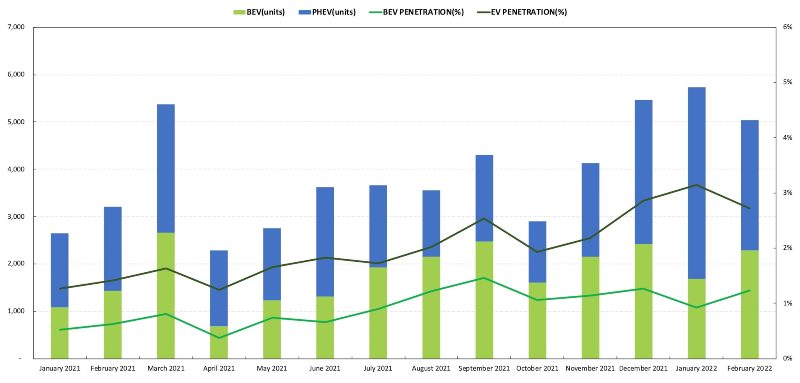
In order to further encourage the purchase of fuel-efficient and low-emission cars, the Japanese government has passed a number of measures known as the Green Vehicle Purchasing Promotion Measures. These measures provide a number of financial incentives for the purchase of fuel-efficient and low-emission cars, including a tax rebate of up to approximately USD 4,500 for the purchase of a fuel-efficient car (Fan et al., 2020). As depicted in the graph below, the production of electric-powered cars in Japan has been increasing steadily over the years, with subsidies playing a big part in it.
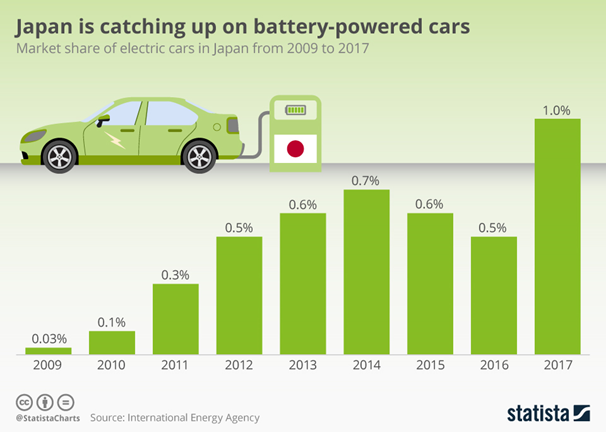
After the Covid-19 pandemic, the Japanese government continues to subsidize. A significant impetus was the distribution of $2.4 billion to promote the manufacture of environmentally friendly vehicles (Khan et al., 2021b). Thus, 140 firms in the country have received a financial opportunity for development (Khan et al., 2021b). For instance, Panasonic Corp and Toyota joint efforts to come up with lithium-ion batteries designed for hybrid vehicles that are less likely to pollute the environment.
Furthermore, subsidies have been utilized to fund electric vehicle charging systems across various towns and cities in Japan. In the figure below, the blue bar represents the cost after subsidies and the black cost without subsidies. This assistance has helped the car industry in Japan to enhance as it can provide its electric car customers with various stations to recharge their batteries (Arba, 2020). Therefore, more people have purchased electric automobiles, which do not release emissions into the surroundings like fuel-drive cars.
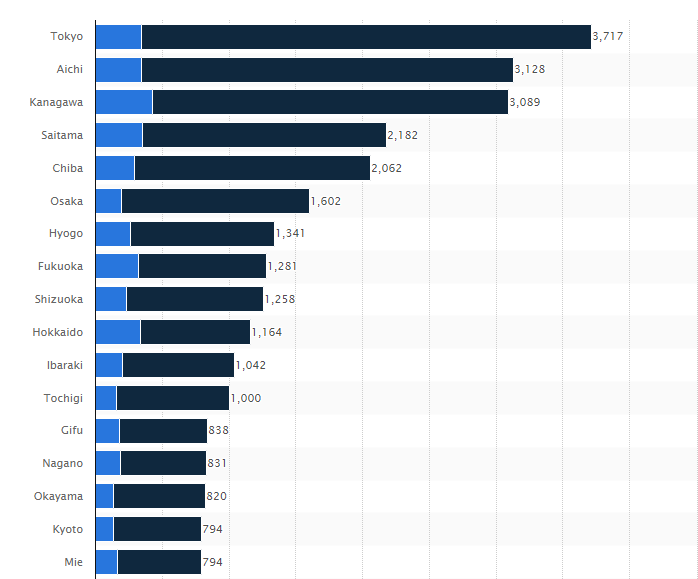
India
The Government of India aims to reduce the level of pollution caused by transport facilities and motor vehicles. The Indian government has given $1.4 million in the form of subsidies to the electric vehicle industry to encourage both manufacturers and consumers to promote such vehicles (Goel et al., 2021). This initiative includes commercial vehicles, including scooters, motorbikes, buses, and three and four-wheeler electric vehicles, to promote the public transport system. Since most people in India travel by public means, having more electrified automobiles would lower the rates of pollution in India.
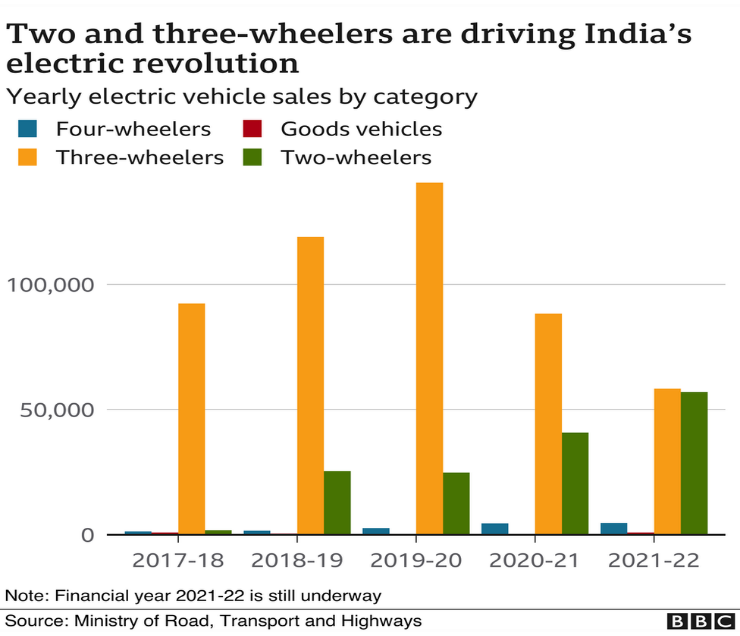
One of the companies that have been assisted by the Indian government in developing the production of electric vehicles is Tesla Motors. The Government of India has significantly helped in the development of the production of electric vehicles Tesla Motors. The move aims to promote environmentally friendly vehicles in the country (Goel et al., 2021). In addition, the state allocates subsidies to support the green initiative. This increased sales from 2015, when about sixteen thousand electric vehicles were sold, until 2020, when the industry was able to sell 156 thousand (The electric vehicle (EV) sector, 2022). The chart below shows sales data from 2015 to 2020.
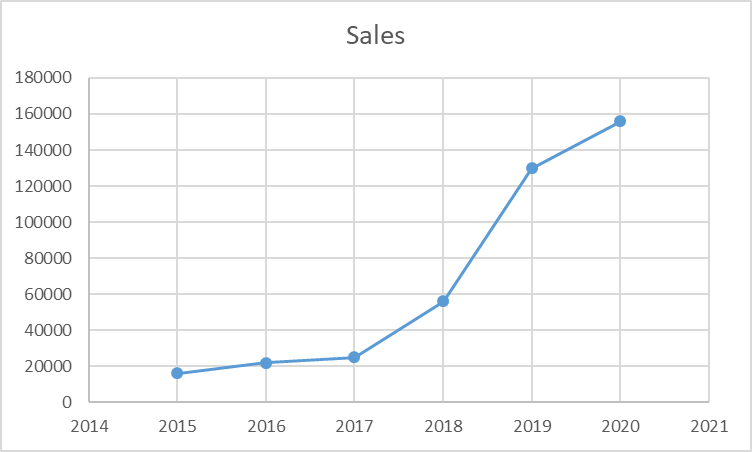
The car companies in India have managed to fund their research and development activities aimed at designing electric automobiles that match their needs. There is a tax deduction of 150% for all industries spending capital on research related to better transport vehicles that are environmentally friendly (Goel et al., 2021). Moreover, the Indian government allows a weighted deduction of 200% to all laboratories and research institutes aimed at lowering environmental damage (Goel et al., 2021). Thus, any car industry engaged in such research enjoys those deductions, helping them perform adequate analysis for a better car industry.
Negative Externalities
However, the report highlights the negative externalities of the machine manufacturing industry. Governments face the challenge of reducing pollution caused by fuel-burning vehicles. Waste products and exhaust gases pollute the air and water (Khan et al., 2021a). This leads to health problems among the population and requires close attention (Khan et al, 2021a). At the moment, there is no way that could completely solve this issue.
In Japan, one of the key ways the government is working to reduce pollution and CO2 emissions is by incentivizing and investing in innovation. This includes investing in the research and development of new technologies, as well as supporting the commercialization and adoption of these technologies by businesses and consumers. One specific example is the Japanese government’s support for fuel cell vehicles (FCVs). FCVs emit no CO2 or other pollutants, and the government is working to promote their use through a variety of measures, including subsidies for FCV purchases, infrastructure investment, and public education campaigns.
The government is working to reduce emissions from other sectors, such as power generation and industry. It has set targets for increasing the use of renewable energy and is investing in efficient technologies such as smart grids and carbon capture and storage (Fan et al., 2020). In addition to these top-down initiatives, the government is encouraging bottom-up innovation by supporting the development of “eco-towns”. These are communities that are designed from the ground up to be environmentally sustainable and serve as living laboratories for testing new technologies and approaches.
There are a number of ways in which innovation and government assistance can play a role in reducing pollution and CO2 emissions in India. The Indian government has been working with the International Energy Agency (IEA) to promote the use of LED lighting, which is more energy-efficient than traditional incandescent bulbs (Goel et al., 2021). The government has also been working to promote the use of more fuel-efficient vehicles, as well as electric vehicles.
Another way to reduce pollution and CO2 emissions in India is through the development and implementation of policies and regulations that encourage the use of cleaner and more efficient technologies. The Indian government has introduced policies and regulations aimed at promoting the use of renewable energy, including the National Solar Mission and the National Wind-Solar Hybrid Policy (Goel et al., 2021). In addition, the government has introduced a number of measures to improve energy efficiencies, such as the Energy Conservation Building Code and the Standards and Labelling Programme.
Conclusion
In conclusion, Japan and India are aiming to reduce environmental pollution through subsidies and investments in eco-cars. States set themselves the goal of introducing more electric machines to the market. Recommendations for this could be continued subsidies and increased investment. The population more often chooses in favor of a car on diesel or gasoline because of the cheaper cost of the vehicle. Accordingly, it is important to make the eco-car industry more accessible to the average buyer.
References
Arba, A. (2022). Japan: Subsidized EV Chargers by prefecture and type 2020. Statista. Web.
Engelmann, J., & Richter, F. (2018). Infographic: Japan is catching up on battery-powered cars. Statista Infographics. Web.
Fan, Z.-P., Cao, Y., Huang, C.-Y., & Li, Y. (2020). Pricing strategies of domestic and imported electric vehicle manufacturers and the design of government subsidy and tariff policies. Transportation Research Part E: Logistics and Transportation Review, 143, 102093.
Genther, P. A. (2020). A History of Japan’s Government-Business Relationship: The Passenger Car Industry. University of Michigan Press.
Goel, S., Sharma, R., & Rathore, A. K. (2021). A review of barriers and challenges of electric vehicles in India and vehicle to grid optimization. Transportation Engineering, 4, 100057.
Japan breaks into the global top 10 EV sales ranking for the first time. EE Times Asia. (2022). Web.
Khan, U., Yamamoto, T., & Sato, H. (2021a). An insight into potential early adopters of hydrogen fuel-cell vehicles in Japan. International Journal of Hydrogen Energy, 46(18), 10589-10607.
Khan, U., Yamamoto, T., & Sato, H. (2021b). Understanding attitudes of hydrogen fuel-cell vehicle adopters in Japan. International Journal of Hydrogen Energy, 46(60), 30698-30717.
Major programs. (n.d.). Ministre of Road Transport and Highways. Web.
The electric vehicle (EV) sector in India to boost both the economy and the environment. (2022). Invest India: Investment Promotion and Facilitation Agency. Web.